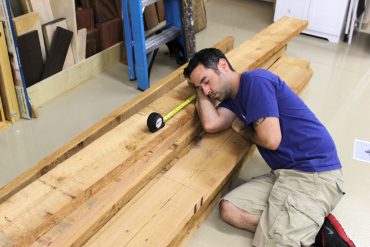
John Bleasby
Coming this weekend: The dangers of daylight savings!
Canadian ContractorMoving the clocks forward affects jobsite health and safety
Be ready to move your clocks forward one hour this coming weekend. However, although it doesn’t take long for our bodies to adapt to this semi-annual change to daylight savings time, there are job site health and safety considerations during the first few days immediately after the change that need consideration.
The first few days after the change are the riskiest. Why?
It’s all about the 40-60 minutes of lost sleep and those darker mornings. Research indicates that people enjoy less sleep for a few days following the changing of the clocks. It has measurable effects on job performance and safety. “One hour of lost sleep may not seem like a lot. But our findings suggest it could have an impact on people’s ability to stay alert on the job and prevent serious injuries,” said Christopher Barnes, Ph.D., co-author of a study on the subject.

Increased fatigue carries over a few days after moving the clocks forward.
As outlined in ehstoday.com, a U.S.-based online source for environment, health and safety best management practices, Barnes’ study analyzed injuries in the U.S. mining industry from 1983 to 2006. “On average, 3.6 more injuries occurred on the Mondays following the switch to daylight saving time compared to other days, and 2,649 more days of work were lost as a result of those injuries. That’s approximately a 68 percent increase in lost workdays.”
These findings are further supported by research conducted on several industries by different organizations. They all point to increased injuries due to a loss of sleep over the first three days after the time change. A Swedish study mentioned in a 2008 New England Journal of Medicine article suggests that heart attacks also increase due to stress hormones that are released which can cause inflammation, a concern for anyone with existing heart attack risks. Another study suggests the disturbance in sleep rhythms can also affect those prone to cluster headaches, although why remains unclear.
Awareness of the problem can reduce accident risks
The message for employers and their workers is that being aware of the increased risks in the days immediately following the switch to daylight savings could be the impetus to renew safety awareness programs on the job. “Time change can be a natural reminder of a few things we can do to make our lives safer,” said Kathy Konicki, the now-retired director of associate safety with Nationwide Mutual Insurance Company in a separate ehstoday.com article. “Just being aware of the increased risk of accidents in the period immediately following the time change may help you stay alert.”
Experts point out that fatigue is the major issue, although it’s more psychological than physical. One might feel a bit sluggish in the morning but it should pass quickly. Nevertheless, sluggishness in the morning is a factor when picking up the tools. Be aware! Maybe start the day doing something that doesn’t involve tools right away, or schedule dangerous work later in the week so that workers have had more time to make the time adjustment.
Got feedback? Make your opinion count by using the comment section below,
or by sending an email to:
JBleasby@canadiancontractor.ca
Follow John on Instagram and on Twitter for notifications about his latest posts


Leave a Reply